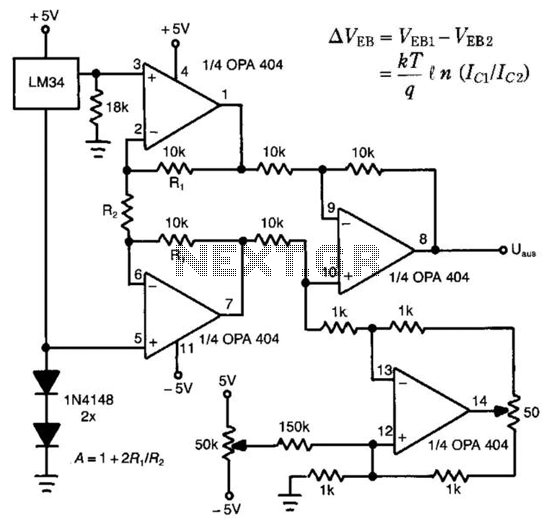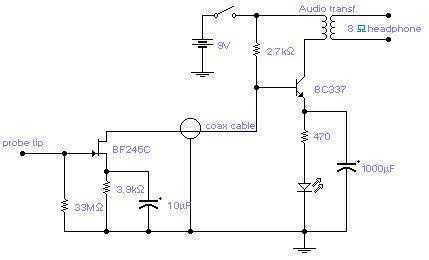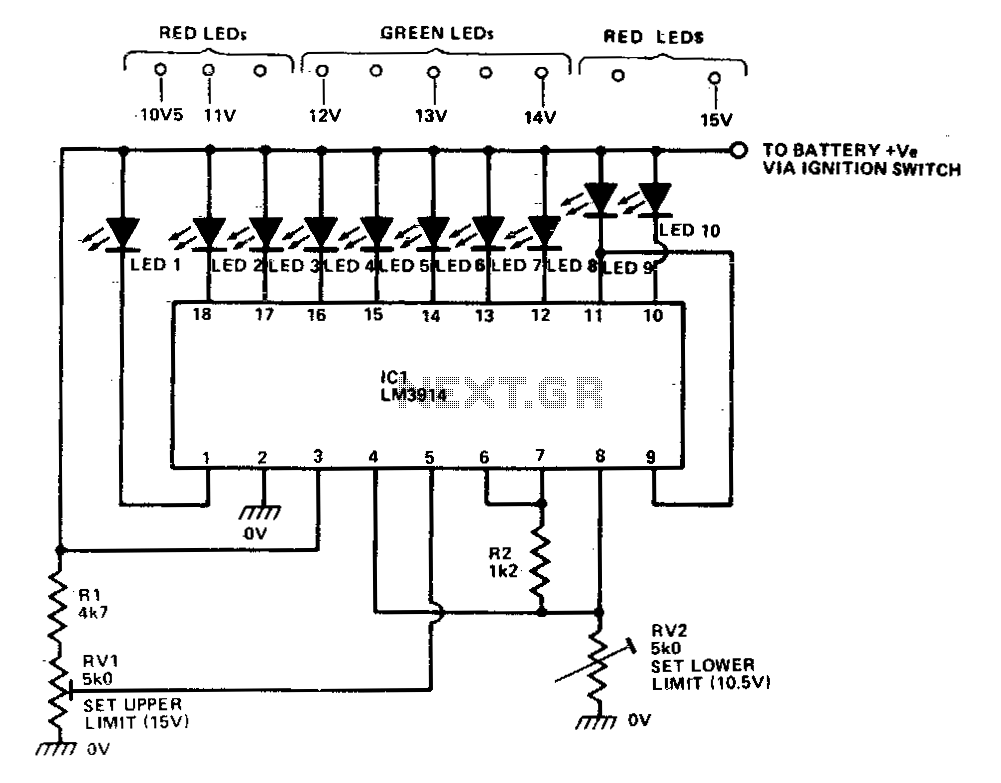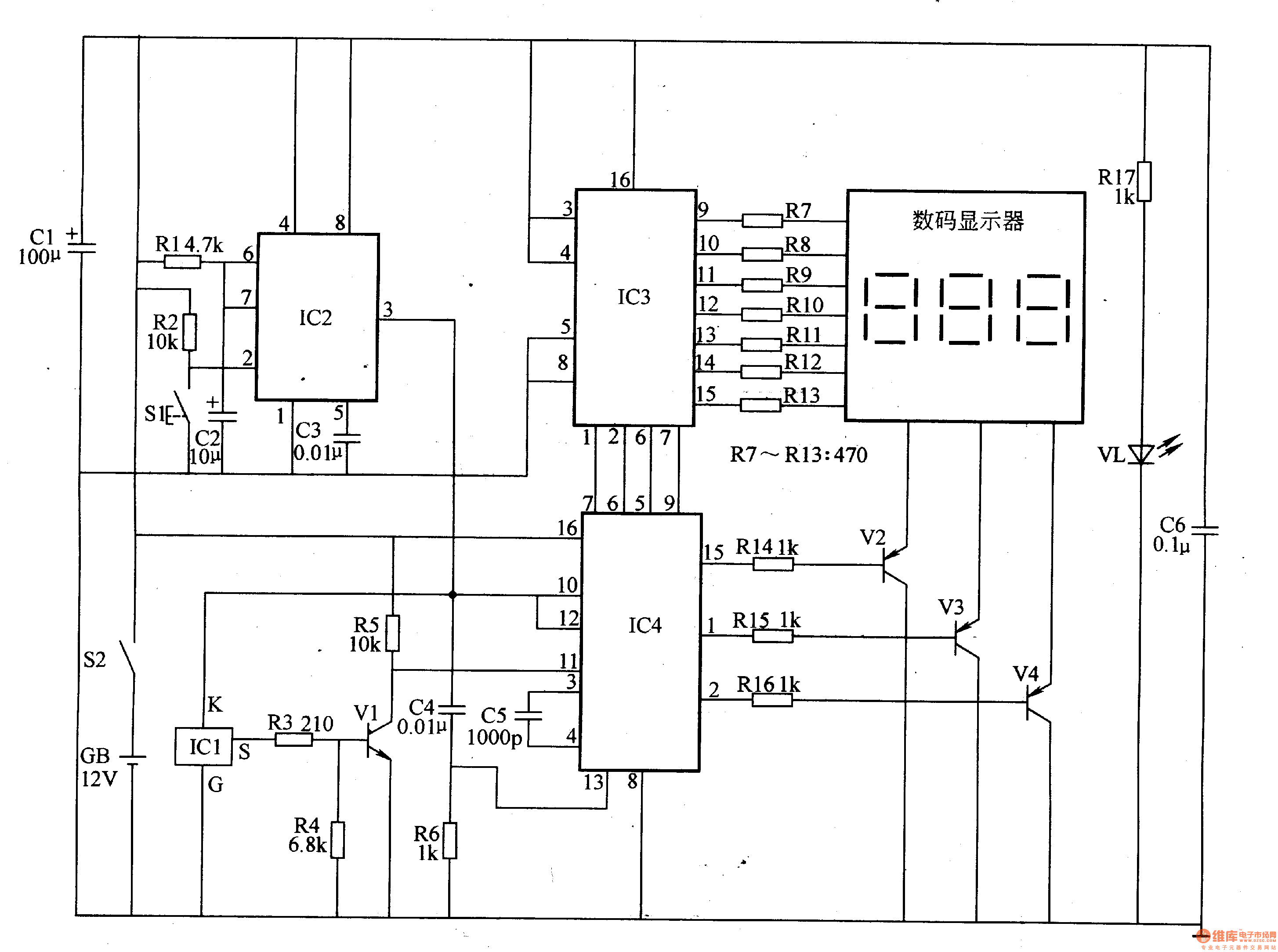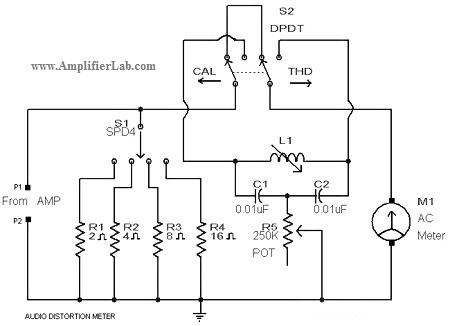
Another RF Field Strength Meter

This circuit is a radio frequency (RF) field strength meter, similar to a previous model but designed to operate with a lower supply voltage using a single 1.5V battery. The schematic diagram of this RF strength meter circuit is provided. To use the device, first, turn on both the transmitter and the meter, then adjust capacitor C1 for peak reading. After that, turn off the transmitter and adjust resistor R1 to achieve a perfect zero reading on the meter. Once this is set, turn the transmitter back on (without audio modulation) and proceed to the designated monitoring points to take measurements. These monitoring points should be several meters or yards away from the antenna, ensuring that the signal remains strong enough to be detected by the instrument. After recording a set of measurements, adjustments can be made to the antenna or transmitter system, followed by another round of readings to evaluate any changes in signal strength. It is advisable to keep a detailed log of the readings in an engineering logbook, noting weather conditions such as dryness or rain in recent days, as moist soil may enhance propagation.
This RF field strength meter circuit is structured to measure the intensity of radio frequency signals in a designated area. The core components include a simple RF signal detector, which can be implemented using a diode or a transistor, and an analog meter to provide a visual indication of the field strength. The use of a single 1.5V battery simplifies the power supply requirements, making this circuit highly portable and easy to deploy in various environments.
The adjustment of capacitor C1 is critical for calibrating the meter to read the maximum signal strength accurately. This capacitor acts as a tuning element, allowing the user to fine-tune the circuit to the specific frequency of interest. The adjustment of resistor R1 ensures that the meter reads zero when no signal is present, which is essential for accurate measurements.
The operational procedure involves first establishing a baseline reading with the transmitter turned off, followed by taking readings at various distances from the antenna while the transmitter is active. This method allows for a comparative analysis of signal strength at different locations, which can be influenced by environmental factors such as terrain and moisture levels in the ground.
Recording the readings in an engineering logbook is important for tracking performance over time and understanding how environmental conditions affect RF propagation. The noted weather conditions, such as whether it has been dry or rainy, can provide insights into variations in signal strength, as moisture can enhance the propagation of RF signals, particularly in certain frequency ranges.
Overall, this RF field strength meter circuit is a valuable tool for RF engineers and hobbyists alike, providing essential data for optimizing antenna systems and understanding radio signal behavior in different environments.This circuit is another radio frequency (rf) field strength meter, similar with our previous field strength meter circuit, but with lower supply voltage (only a single cell 1. 5V battery). Here is the schematic diagram of this rf strength meter circuit: To use, turn on transmitter and meter; adjust C1 for peak reading.
Turn off transmitter and adju st R1 for a perfect zero reading on the meter. Turn on transmitter (with no audio modulation) and go to your monitor point(s) and take readings. Your monitor point(s) should be many meters/yards away from your antenna, but obviously must be where the signal is still strong enough to register on your instrument. After taking a set of readings, you can experiment with your antenna or transmitter system, then take another set of readings and determine whether your signal strength was increased or diminished.
Keep your readings in your engineering logbook. Make note of whether it`s been dry or rainy in recent days; moist soil might give slightly better propagation. 🔗 External reference
This RF field strength meter circuit is structured to measure the intensity of radio frequency signals in a designated area. The core components include a simple RF signal detector, which can be implemented using a diode or a transistor, and an analog meter to provide a visual indication of the field strength. The use of a single 1.5V battery simplifies the power supply requirements, making this circuit highly portable and easy to deploy in various environments.
The adjustment of capacitor C1 is critical for calibrating the meter to read the maximum signal strength accurately. This capacitor acts as a tuning element, allowing the user to fine-tune the circuit to the specific frequency of interest. The adjustment of resistor R1 ensures that the meter reads zero when no signal is present, which is essential for accurate measurements.
The operational procedure involves first establishing a baseline reading with the transmitter turned off, followed by taking readings at various distances from the antenna while the transmitter is active. This method allows for a comparative analysis of signal strength at different locations, which can be influenced by environmental factors such as terrain and moisture levels in the ground.
Recording the readings in an engineering logbook is important for tracking performance over time and understanding how environmental conditions affect RF propagation. The noted weather conditions, such as whether it has been dry or rainy, can provide insights into variations in signal strength, as moisture can enhance the propagation of RF signals, particularly in certain frequency ranges.
Overall, this RF field strength meter circuit is a valuable tool for RF engineers and hobbyists alike, providing essential data for optimizing antenna systems and understanding radio signal behavior in different environments.This circuit is another radio frequency (rf) field strength meter, similar with our previous field strength meter circuit, but with lower supply voltage (only a single cell 1. 5V battery). Here is the schematic diagram of this rf strength meter circuit: To use, turn on transmitter and meter; adjust C1 for peak reading.
Turn off transmitter and adju st R1 for a perfect zero reading on the meter. Turn on transmitter (with no audio modulation) and go to your monitor point(s) and take readings. Your monitor point(s) should be many meters/yards away from your antenna, but obviously must be where the signal is still strong enough to register on your instrument. After taking a set of readings, you can experiment with your antenna or transmitter system, then take another set of readings and determine whether your signal strength was increased or diminished.
Keep your readings in your engineering logbook. Make note of whether it`s been dry or rainy in recent days; moist soil might give slightly better propagation. 🔗 External reference
